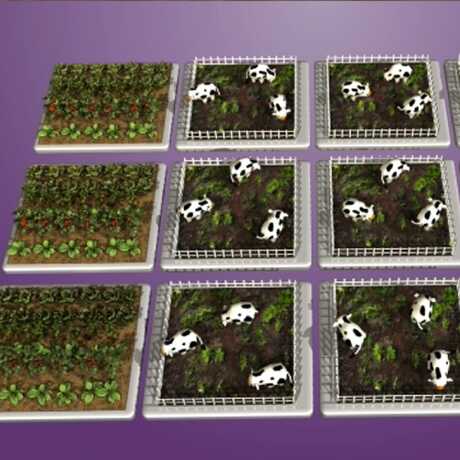Teacher note: If you preceded this activity with the Exploring the Impacts of Feeding the World activity, you can skip steps 1 and 3 below.
1. Hand out to students or write on the board a list of questions for them to think about while they watch the Flipside Science: The Environmental Impact of Feeding the World video (see below).
2. Show students the video.
3. Ask student to jot down some of their thoughts about the questions that they were asked to consider while watching the video. Give them about 10 minutes to do this. You might want to play the video another time through for students. Briefly discuss these questions as a class after students have had a chance to reflect individually.
- What kinds of issues surrounding our current food system were raised in the video?
- What impacts does agriculture have on the environment?
- How is the American diet different from other diets around the world?
- Does everyone have the same food choices? What influences the types of foods a person has access to?
- What do you do with food on your plate that you don’t finish?
4. Ask students to choose one of the main issues introduced in the video to focus on (food waste, food deserts, agricultural land use, and the environmental impacts of diet choices) and to find a partner who chose the same issue. Note: To expedite this process or if you would like to ensure that all food system issues are represented, you can also have students pick food system issues out of a hat and pair up that way too.
5. Hand out one Student Worksheet to each student. Instruct students to work with their partners to figure out a way to express the food system issue they chose in the form of a question, and to write their question on their worksheet. Give students about 5-10 minutes to work on this, helping to facilitate the process where needed. Here are some examples of questions students might consider:
- How could we motivate people to change their diets to lower their impact on the environment?
- How could we provide more fresh, healthy foods to people who currently don’t have access to them?
- How could we decrease the amount of food waste generated by restaurants/grocery stores/our school cafeteria?
- How could we grow more food with less land?
6. Hand out one stopwatch or timer to each pair, and briefly show students how to use them if needed. At this point, students will guide themselves through the next few steps of the activity, which include working through the process of facilitating their own rapid brainstorming sessions with their partners and comparing their ideas. Give students about 20 minutes for this part of the activity, reminding them when they have 10 minutes and 5 minutes left.

